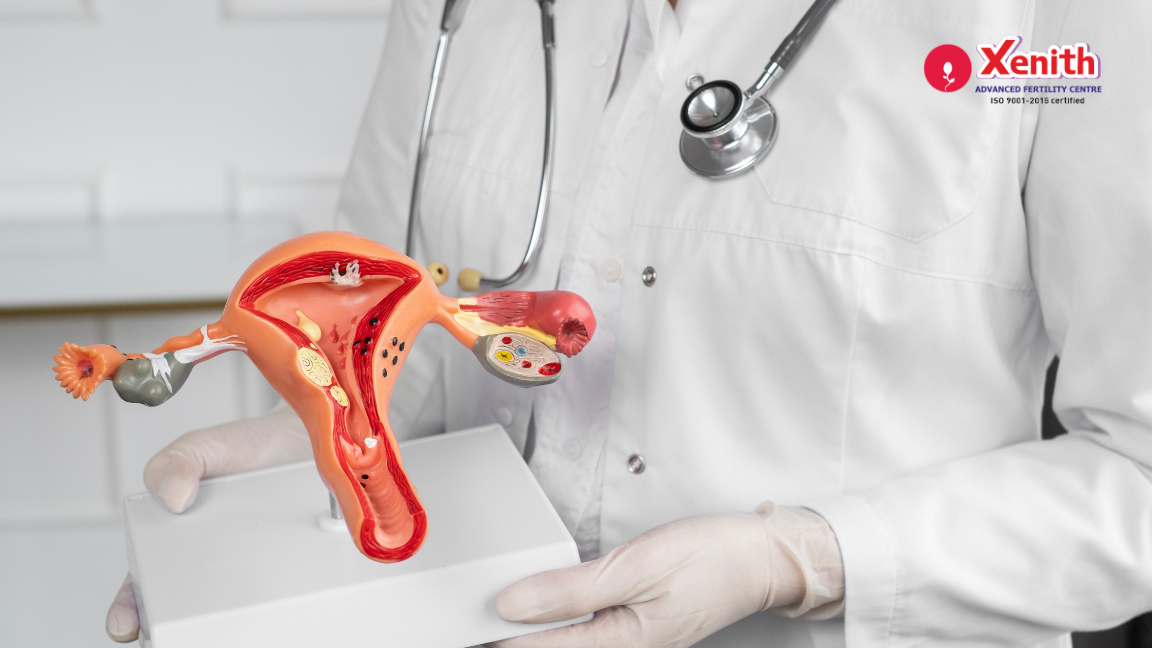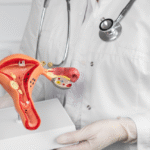Now Reading: Understanding Amh And Ovarian Reserve
-
01
Understanding Amh And Ovarian Reserve
Understanding Amh And Ovarian Reserve

Understanding AMH and ovarian reserve is vital for women’s health. It affects fertility and reproductive planning.
AMH, or Anti-Müllerian Hormone, plays a crucial role in assessing ovarian reserve. This is a key indicator of a woman’s remaining egg supply. Understanding these concepts can help women make informed decisions. Many women find fertility a complex subject. Yet, knowing AMH levels can offer clarity.
It helps in predicting how many eggs a woman has left. This information is valuable for those considering pregnancy. It also aids those planning for the future. Grasping the basics of AMH and ovarian reserve can empower women. It provides insights into their reproductive health. This knowledge can guide personal and medical decisions.
Amh Basics
Understanding AMH and ovarian reserve is crucial in reproductive health. AMH, or Anti-Müllerian Hormone, offers insights into fertility and egg quantity. Knowing the basics helps grasp how it affects your reproductive journey.
What Is Amh?
AMH stands for Anti-Müllerian Hormone. It’s a protein hormone. The ovaries produce it. AMH levels indicate the number of eggs in reserve. They give an idea of fertility potential. AMH testing is common in fertility clinics. It’s a simple blood test. Results can guide fertility planning.
Role In Reproductive Health
AMH plays a key role. It helps measure ovarian reserve. Higher AMH levels suggest more eggs. Lower levels might mean fewer eggs. This information is vital for fertility treatments. It helps in IVF success rates. AMH levels also relate to menopause timing. Understanding AMH helps manage reproductive health effectively.

Measuring Amh
Understanding your ovarian reserve is crucial for anyone exploring fertility options, and measuring Anti-Müllerian Hormone (AMH) levels is an essential part of this process. AMH is a substance produced by your ovarian follicles, and its levels in your blood can provide valuable insight into your fertility health. Let’s dive deeper into how AMH is tested and how to interpret these levels effectively.
How Amh Is Tested
Testing your AMH levels involves a simple blood test. You don’t need to prepare or fast before this test, making it convenient for anyone with a busy schedule.
Your doctor will draw a small sample of blood, typically from your arm. Results are usually available within a few days, providing timely information about your ovarian reserve.
This test can be done at any point in your menstrual cycle, which is a significant advantage over some other fertility tests. You might be wondering, how accurate are these results? Generally, AMH levels are considered a reliable indicator of your ovarian reserve.
Interpreting Amh Levels
Once you have your AMH results, understanding what they mean is the next step. AMH levels are measured in nanograms per milliliter (ng/mL).
Low AMH levels might indicate a reduced ovarian reserve, while higher levels can suggest a more substantial reserve. But remember, AMH levels aren’t a definitive prediction of your fertility—other factors like age and overall health play a role.
If your AMH levels are lower than expected, don’t panic. It’s essential to discuss these results with your healthcare provider, who can guide you on potential next steps or treatments.
Have you ever wondered if lifestyle changes could impact your AMH levels? While AMH is largely determined by biological factors, maintaining a healthy lifestyle can support your overall reproductive health.
Understanding your AMH levels can feel overwhelming, but it’s a powerful tool in navigating your fertility journey. Use this information to make informed decisions about your reproductive health, and always seek advice from professionals. What questions do you have about your AMH levels? Share them, and let’s find answers together.
Ovarian Reserve Insights
Understanding your ovarian reserve can be a pivotal part of your fertility journey. It’s like having a window into your reproductive health, giving you insights into your egg quantity and quality. Knowing this can help you make informed decisions about family planning and fertility treatments.
Definition Of Ovarian Reserve
Ovarian reserve refers to the number and quality of eggs remaining in your ovaries. As you age, this reserve naturally decreases. But it’s not just about age—genetics and lifestyle factors also play a significant role. Knowing your ovarian reserve helps you understand your reproductive timeline.
Consider ovarian reserve as a snapshot of your fertility potential. You may wonder if it’s possible to measure it. The answer is yes! Tests like the AMH (Anti-Müllerian Hormone) test are commonly used to assess your ovarian reserve. This test offers a glimpse into how many eggs you might have left.
Importance For Fertility
Your ovarian reserve is crucial for fertility planning. It can guide decisions on when to start trying for a family or consider fertility treatments. If you’ve been delaying parenthood, understanding your reserve can shape your timeline. It’s empowering to know where you stand.
Think about it—if you learn your reserve is lower than expected, you might choose to explore fertility preservation options like egg freezing. On the flip side, a robust reserve can offer peace of mind. It’s all about having choices and planning with confidence.
Have you ever wondered how lifestyle affects your ovarian reserve? Smoking, obesity, and stress can impact it negatively. Conversely, maintaining a healthy lifestyle can be beneficial. So, what steps are you taking today to support your fertility tomorrow?
Amh And Age
Understanding the relationship between AMH and age is crucial for fertility. AMH, or Anti-Müllerian Hormone, is a marker of ovarian reserve. It helps in evaluating a woman’s potential for conception. As women age, their AMH levels typically decline. This decline indicates a reduction in the number of viable eggs. Knowing how age impacts AMH levels can guide reproductive planning.
Age Impact On Amh Levels
AMH levels are highest in women in their 20s. These levels begin to decrease in their 30s. By the time a woman reaches her 40s, AMH levels drop significantly. This decline signifies a natural decrease in fertility. Understanding this trend helps women plan their reproductive journey. It also aids doctors in providing accurate fertility advice.
Age-related Fertility Changes
As women age, several fertility changes occur. Egg quality diminishes over time. This reduction can affect the chances of conception. The risk of chromosomal abnormalities in eggs increases with age. Fertility treatments may become less effective. Knowing these changes can guide informed decisions about family planning.
Factors Affecting Amh
Age, genetics, and lifestyle impact AMH levels, influencing ovarian reserve. Stress and smoking can lower AMH, while a healthy diet may support it.
Understanding AMH and ovarian reserve is crucial for anyone looking to grasp their reproductive health. Anti-Müllerian hormone (AMH) levels can reveal a lot about your fertility potential. But did you know various factors can influence these levels? Let’s delve into these elements and see how they can impact your AMH levels.
Genetic Influences
Your genes play a significant role in determining your AMH levels. Just like eye color or height, AMH levels can be inherited.
Think about your family history. If your mother or grandmother faced early menopause, you might also experience lower AMH levels. It’s a genetic ripple effect that can be telling.
But it’s not all set in stone. Understanding your genetic background can help in planning your reproductive journey. Have you had conversations with family members about their fertility experiences?
Lifestyle And Environmental Factors
Your daily choices can directly impact your AMH levels. What you eat, how often you exercise, and even how much stress you face can alter your hormonal balance.
Consider how you manage stress. High-stress levels can affect your body’s overall health, including your reproductive system. Maybe meditation or yoga could be beneficial?
Environmental factors also come into play. Exposure to pollutants or harmful chemicals can lower AMH levels. Are there ways you can reduce exposure, like choosing organic foods or using natural products?
Ultimately, it’s about making informed choices. How can you adjust your lifestyle to support your reproductive health? The answers lie in understanding these factors and taking actionable steps.
Amh In Fertility Treatments
AMH, or Anti-Müllerian Hormone, helps evaluate ovarian reserve in fertility treatments. It measures the number of eggs a woman has. Understanding AMH levels guides doctors in tailoring personalized fertility plans.
Understanding the role of Anti-Müllerian Hormone (AMH) in fertility treatments can be a game-changer for many aspiring parents. If you’re considering fertility treatments, especially In Vitro Fertilization (IVF), understanding AMH levels is crucial. This hormone provides valuable insights into your ovarian reserve, essentially the pool of eggs you have left. But what does this mean for your fertility journey?
Role In Ivf
AMH plays a significant part in the IVF process. Doctors use AMH levels to tailor stimulation protocols during IVF. If your AMH levels are high, it might indicate a good ovarian reserve, suggesting a potentially higher egg retrieval count.
Think of AMH as your fertility guide. It helps your doctor decide the right medication dosage to stimulate your ovaries effectively. This personalization can increase the chances of a successful egg retrieval.
Predicting Treatment Outcomes
AMH is not just about the present; it’s a window into future fertility potential. It helps predict how your body might respond to fertility treatments. Lower AMH levels can sometimes mean a lower response to ovarian stimulation.
Knowing your AMH levels can set realistic expectations and guide you through treatment options. It’s like having a roadmap, providing direction on your fertility journey.
Why not discuss your AMH levels with your doctor? Understanding them could influence the success rate of your fertility treatments. The more informed you are, the more empowered you become in making decisions about your fertility path.
Have you ever thought about how your body gives clues about your fertility health? AMH is one of those clues, waiting to be uncovered and understood.
Amh Limitations
Understanding AMH and ovarian reserve reveals its limitations in predicting fertility. AMH levels may not accurately reflect egg quality or future fertility outcomes. Variations in AMH readings can occur due to different testing methods and individual differences.
Understanding the limitations of Anti-Müllerian Hormone (AMH) tests is crucial for anyone assessing their ovarian reserve. While AMH is a valuable tool in predicting fertility potential, it does have its constraints. Knowing these can help you make more informed decisions about your reproductive health.
Potential Misinterpretations
AMH levels can be misunderstood if viewed in isolation. A high AMH level might suggest a strong ovarian reserve, but it doesn’t guarantee the quality of the eggs. Similarly, a low AMH level can cause unnecessary panic, as many women with low AMH still conceive naturally.
Consider the story of a friend who was alarmed by her low AMH result and thought she couldn’t have children. She later discovered that her overall fertility was still within a healthy range. This highlights how AMH is just one piece of the fertility puzzle.
Are you relying solely on AMH results to assess your fertility? It’s essential to consider other factors like age and general health, which also play significant roles.
When To Seek Additional Tests
If your AMH results are confusing or worrisome, it might be time to explore further. Consult your healthcare provider about additional tests like antral follicle count or hormone level assessments. These can provide a more comprehensive picture of your fertility.
For example, if you’re experiencing irregular periods or other reproductive issues, these tests can offer insights beyond what AMH levels can show. They help in diagnosing conditions like Polycystic Ovary Syndrome (PCOS) or early menopause.
Have you discussed the full scope of fertility testing with your doctor? Ensure you have a thorough understanding of all available tests to make informed decisions about your reproductive journey.
Remember, information is power. By knowing the limitations of AMH, you’re better equipped to navigate your fertility options with confidence.

Improving Ovarian Reserve
Understanding ovarian reserve can feel overwhelming. It is an important aspect of fertility health. Ovarian reserve refers to the number of eggs left in the ovaries. It’s crucial for women wanting to conceive.
Improving ovarian reserve may enhance fertility chances. Lifestyle changes and medical solutions can help. Let’s explore some effective methods.
Diet And Nutrition
Eating a balanced diet supports ovarian health. Include fruits, vegetables, and whole grains in meals. These foods provide essential vitamins and minerals. Antioxidants found in berries and leafy greens protect egg health.
Consume healthy fats like those in avocados and nuts. Omega-3 fatty acids, found in fish, boost reproductive health. Limit processed foods and sugary snacks. They may negatively affect ovarian function.
Hydration is equally vital. Drink plenty of water daily. This ensures optimal body function and supports egg quality.
Medical Interventions
Medical interventions might improve ovarian reserve. Consult with a fertility specialist for personalized guidance. Hormonal therapies can balance reproductive hormones. They may stimulate egg production.
Fertility medications sometimes increase the number of mature eggs. A doctor determines the right medication based on individual needs. In certain cases, ovarian rejuvenation techniques are considered. These are experimental but show promise.
Regular check-ups with a healthcare provider are important. They help monitor ovarian reserve and provide necessary treatments.
Frequently Asked Questions
What Is A Normal Ovarian Reserve Amh Level?
A normal ovarian reserve AMH level typically ranges from 1. 0 to 4. 0 ng/mL. Levels below 1. 0 indicate low reserve, while levels above 4. 0 can suggest a high reserve, which might be indicative of PCOS. Always consult a healthcare provider for accurate interpretation and advice.
What Is The Relationship Between Amh And Ovarian Reserve?
AMH levels indicate ovarian reserve by measuring the number of remaining eggs in the ovaries. Higher AMH suggests a better ovarian reserve. Regular testing helps assess fertility potential and plan for family planning or fertility treatments. Understanding AMH levels can guide reproductive health decisions effectively.
What Is The Ideal Amh Level To Get Pregnant?
The ideal AMH level for pregnancy is between 1. 0 to 4. 0 ng/mL. Levels vary by age and individual. Consult a healthcare provider for personalized advice.
How Accurate Is Amh For Ovarian Reserve?
AMH reliably indicates ovarian reserve but isn’t perfect. It offers a snapshot of egg quantity, not quality. Factors like age and health can affect results. Consult with a healthcare professional for comprehensive evaluation.
Conclusion
Understanding AMH and ovarian reserve is crucial for fertility insights. It helps in assessing reproductive health. Knowing these factors aids in planning for the future. Women gain better control over their reproductive choices. Consult healthcare professionals for personal guidance. They provide tailored advice based on individual needs.
Remember, knowledge is power in health matters. Awareness leads to informed decisions. Take steps to understand your body better. This empowers you on your fertility journey. Stay informed, stay proactive. Your health matters most.






















